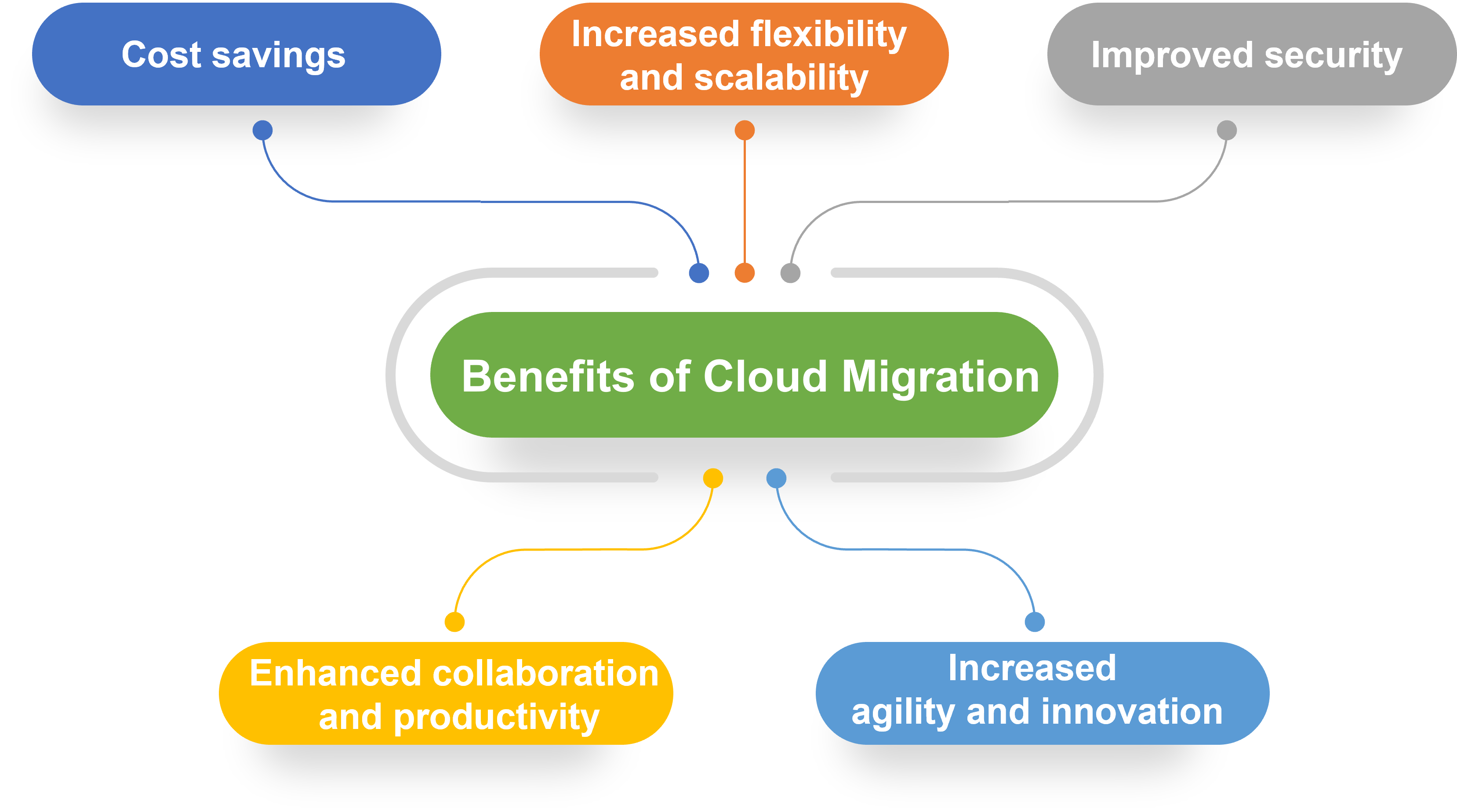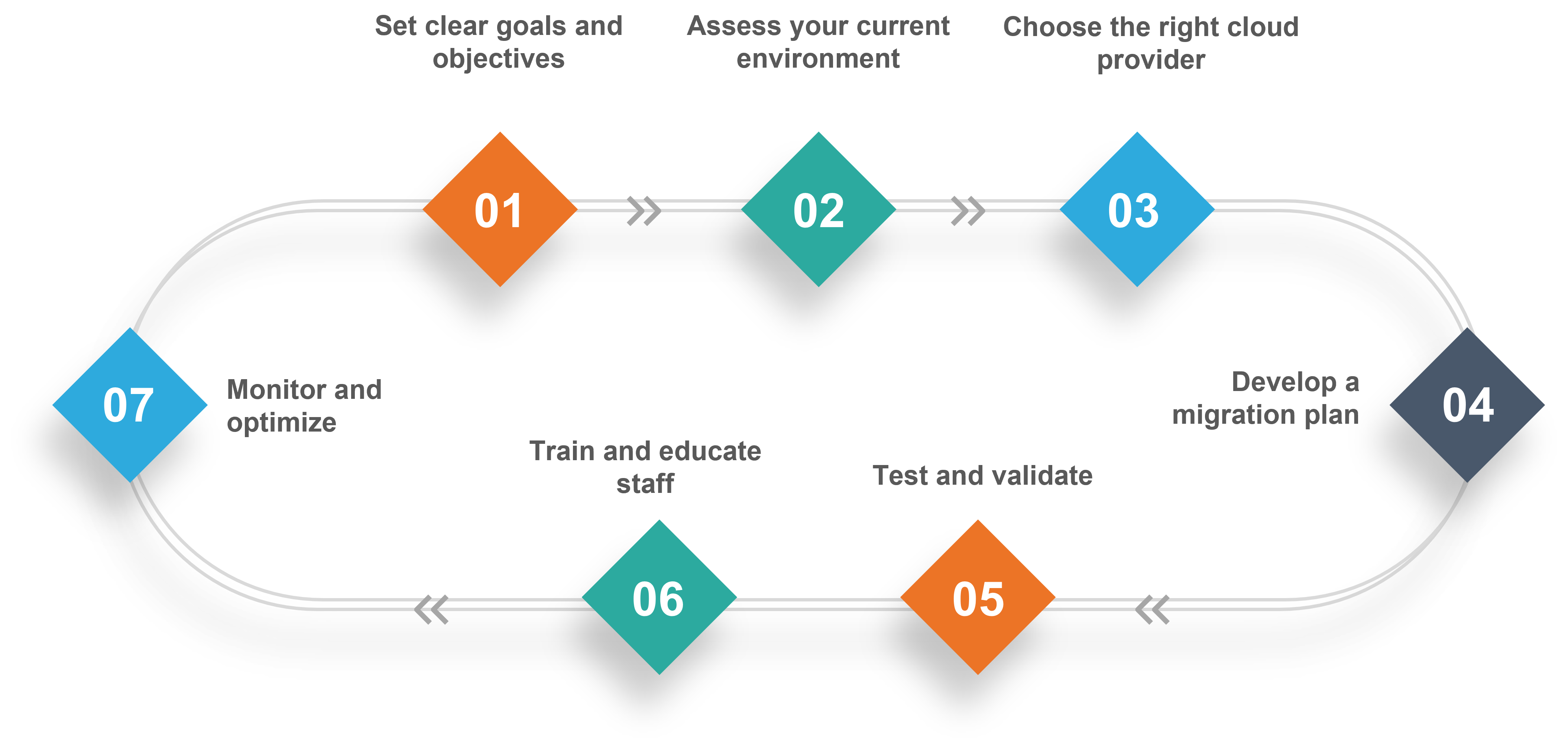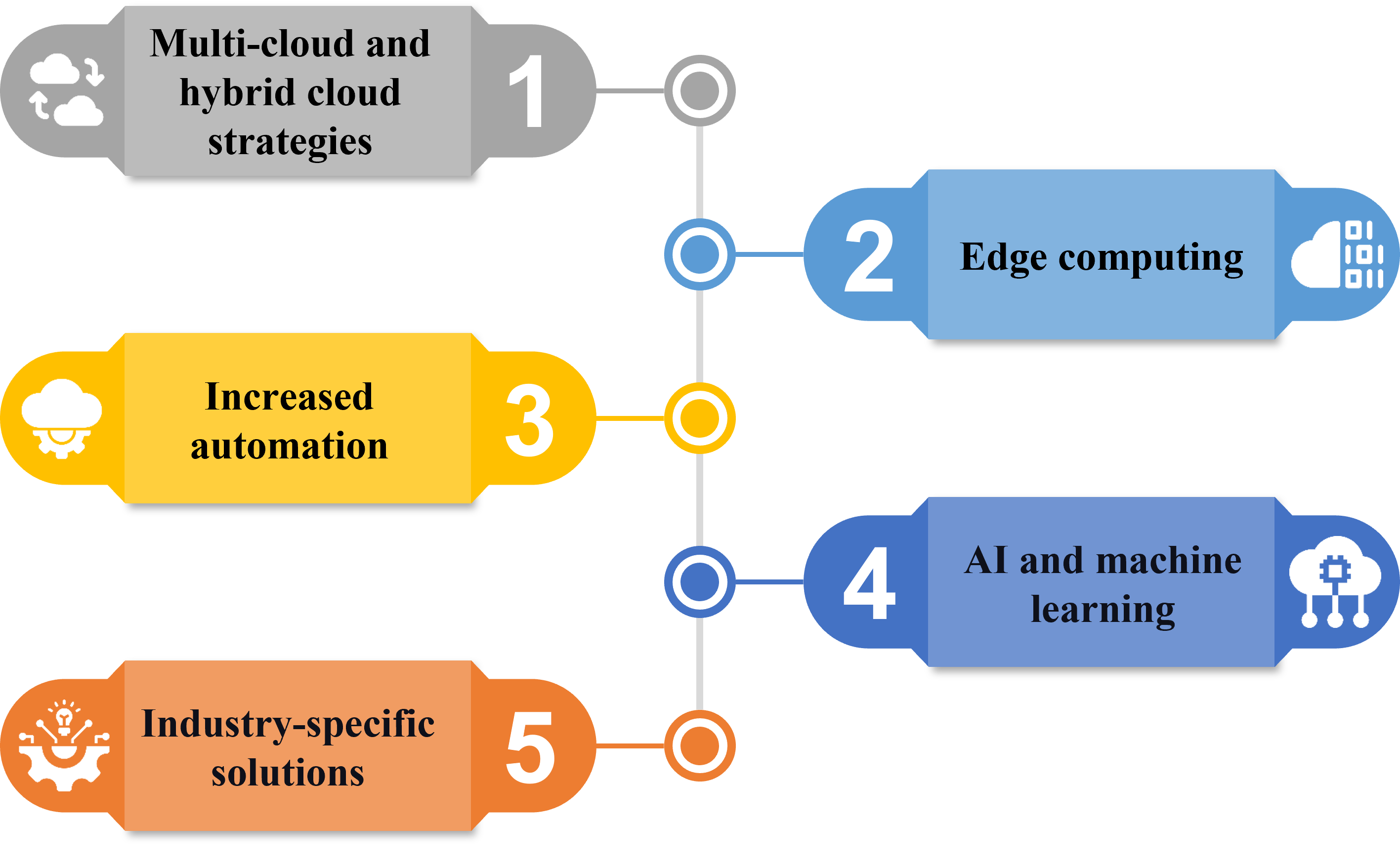2025-04-18
Meet Your New Digital Coworker: Autonomous AI Agents for Smarter Workflows
17 March, 2023
Cloud

In today's digital age, businesses and organizations are constantly looking for ways to enhance their IT infrastructure and improve their operations. One solution that has gained popularity in recent years is cloud migration, or the process of moving data, applications, and services from on-premises servers to cloud-based servers. If you're still hesitant about migrating to the cloud, this article will provide you with compelling reasons why it's the best decision you'll make in 2023.
The benefits of migrating to the cloud service infrastructure are numerous and impactful. First and foremost, cloud migration can result in significant cost savings. Instead of investing in costly hardware and maintenance, businesses can opt for pay-as-you-go models and reduce their IT expenses. Additionally, cloud migration offers scalability and flexibility, allowing businesses to easily adjust their resources and infrastructure based on their changing needs. Cloud providers also offer robust security measures and disaster recovery options, ensuring that data is protected and recoverable in case of any unforeseen events.

Cloud migration offers numerous benefits to businesses, including:
One of the most significant benefits of cloud migration is cost savings. By moving to the cloud, businesses can reduce their capital expenditures on hardware and software, as well as their operational expenses on maintenance, upgrades, and support. Cloud providers offer pay-as-you-go pricing models that allow businesses to scale their usage up or down based on their needs, which can help reduce overall costs.
Cloud computing offers businesses the flexibility to scale their resources up or down as needed, based on demand. This means that businesses can quickly and easily add or remove resources as their needs change, without having to worry about hardware limitations or capacity planning. This can help businesses stay agile and respond quickly to changing market conditions.
Cloud providers invest heavily in security and compliance, which means that businesses that migrate to the cloud can benefit from best-in-class security measures. Cloud providers typically have a team of security experts that monitor their platforms 24/7, and they use advanced security technologies like encryption, firewalls, and intrusion detection/prevention systems to protect their customers' data.
Cloud migration can also improve collaboration and productivity within a business. Cloud-based platforms offer employees access to real-time data and applications from anywhere, which can help facilitate collaboration and communication. Cloud-based tools like project management software and productivity suites can also help employees work more efficiently and effectively.
Cloud migration can help businesses become more agile and innovative by allowing them to experiment with new technologies and business models. With the cloud, businesses can quickly spin up new environments and test new ideas without having to worry about infrastructure limitations or capital expenditures. This can help businesses stay ahead of the competition and differentiate themselves in the market.
While the benefits of cloud migration are clear, there are still some concerns and misconceptions that may prevent businesses from making the move. One common concern is data privacy, as some may worry that their data will be less secure on cloud servers. However, cloud providers often have more resources and expertise to dedicate to security measures than individual businesses do. Another concern is vendor lock-in, or the fear that once a business migrates to the cloud, it will be difficult to switch providers. However, with proper planning and management, businesses can avoid this issue and maintain control over their data and services.
Cloud migration can be a complex process that requires careful planning and execution to ensure a successful transition. Here are some best practices and tips to help you navigate the cloud migration process:

Before embarking on a cloud migration, it's important to define clear goals and objectives for the migration. This can include improving scalability, reducing costs, increasing efficiency, or enhancing security.
Conduct a thorough assessment of your current IT environment to identify applications, systems, and data that are suitable for migration to the cloud. This will help you determine the scope of the migration and the resources required.
Select a best cloud service provider that meets your specific business needs and offers the features and services that are important to you. Consider factors such as cost, scalability, security, and support.
Create a detailed migration plan that outlines the steps, timeline, and resources required for the migration. This plan should include contingency measures in case of unforeseen issues or challenges.
Test and validate your migration plan before executing it to ensure that it works as expected. This can include testing the migration of data and applications, as well as testing for performance and security.
Train and educate your staff on the new cloud environment and the changes that will occur as a result of the migration. This will help ensure a smooth transition and reduce the risk of downtime or errors.
Monitor your new cloud environment to ensure that it is operating as expected and optimize it to improve performance, reduce costs, and enhance security.
By following these best practices and tips, you can ensure a successful cloud migration that meets your business needs and achieves your desired outcomes. Remember to stay flexible and adaptable throughout the process, and to seek expert guidance if needed.
Cloud migration has become a buzzword in the world of business in recent years, and it's not hard to see why. The benefits of cloud migration are well-documented, including cost savings, increased flexibility, improved security, and enhanced collaboration. But what does the future hold for cloud migration, and what opportunities are on the horizon?

As businesses continue to migrate to the cloud, we are seeing a shift towards multi-cloud and hybrid cloud strategies. These approaches involve using multiple cloud providers or a combination of cloud and on-premise solutions to achieve the best of both worlds. This allows businesses to take advantage of the strengths of each platform while minimizing their weaknesses.
Another trend that is emerging in the world of cloud migration is edge computing. Edge computing involves processing data closer to the source, which can improve response times and reduce latency. This is particularly important for businesses that rely on real-time data, such as those in the IoT and AI spaces.
Cloud providers are investing heavily in automation technologies, and this trend is set to continue. Automation can help businesses streamline their operations and reduce the risk of human error, while also freeing up employees to focus on higher-value tasks.
As businesses continue to migrate to the cloud, we are likely to see an increased focus on AI and machine learning. These technologies can help businesses make better use of the data they collect, and can enable them to automate tasks and processes that would otherwise require human intervention.
Finally, we are likely to see an increase in industry-specific cloud solutions. As businesses become more specialized, they will need cloud solutions that are tailored to their specific needs. This could involve vertical-specific platforms that are designed for industries such as healthcare, finance, or manufacturing.
“Ready to take your business to the next level? Download our free whitepaper now to explore the latest trends and emerging technologies in cloud infrastructure. Discover the next big things in cloud computing and stay ahead of the curve in today's competitive market. Don't wait, click the link to get your copy now!”
In conclusion, migrating to the cloud is the best decision you'll make in 2023. Cloud migration offers numerous benefits, including cost savings, scalability, flexibility, and security. While there are some concerns and misconceptions surrounding cloud migration, they can be addressed with proper planning and management. By following best practices and tips, businesses can ensure a successful cloud migration and take advantage of the opportunities that cloud computing presents. The future of cloud computing looks bright, and businesses that migrate to the cloud will be well-positioned to thrive in the digital age.
A: Cloud migration is the process of moving data, applications, and services from on-premises servers to cloud-based servers. This allows businesses to take advantage of the benefits of cloud computing, including cost savings, scalability, flexibility, and security.
A: Cloud migration offers numerous benefits, including cost savings, scalability, flexibility, and security. Instead of investing in costly hardware and maintenance, businesses can opt for pay-as-you-go models and reduce their IT expenses. Cloud providers also offer robust security measures and disaster recovery options, ensuring that data is protected and recoverable in case of any unforeseen events. Additionally, cloud migration allows businesses to easily adjust their resources and infrastructure based on their changing needs.
A: Some common concerns and misconceptions about cloud migration include data privacy, vendor lock-in, and reliability. However, cloud providers often have more resources and expertise to dedicate to security measures than individual businesses do. With proper planning and management, businesses can avoid vendor lock-in and maintain control over their data and services. Additionally, cloud providers often have reliable and redundant systems to ensure uptime and availability.
A: To ensure a successful cloud migration, businesses should follow best practices and tips. They should carefully choose their cloud provider based on their needs and preferences. They should also assess their workload and determine which applications and services are suitable for the cloud. Next, businesses should plan their migration strategy, including timelines, resources, and testing. Finally, businesses should train their staff to use the new cloud infrastructure and take advantage of its features.
A: Some emerging trends and opportunities in cloud computing include hybrid cloud, multicloud, edge computing, and artificial intelligence. Hybrid cloud combines public and private cloud infrastructure, while multicloud uses multiple cloud providers. Edge computing brings computing power closer to the source of data, while artificial intelligence uses machine learning algorithms to enhance cloud services. These trends can further enhance the benefits of cloud migration and create new possibilities for innovation and growth.
Latest Posts
OUR BLOG
© 2025 Pronix inc. All Rights Reserved